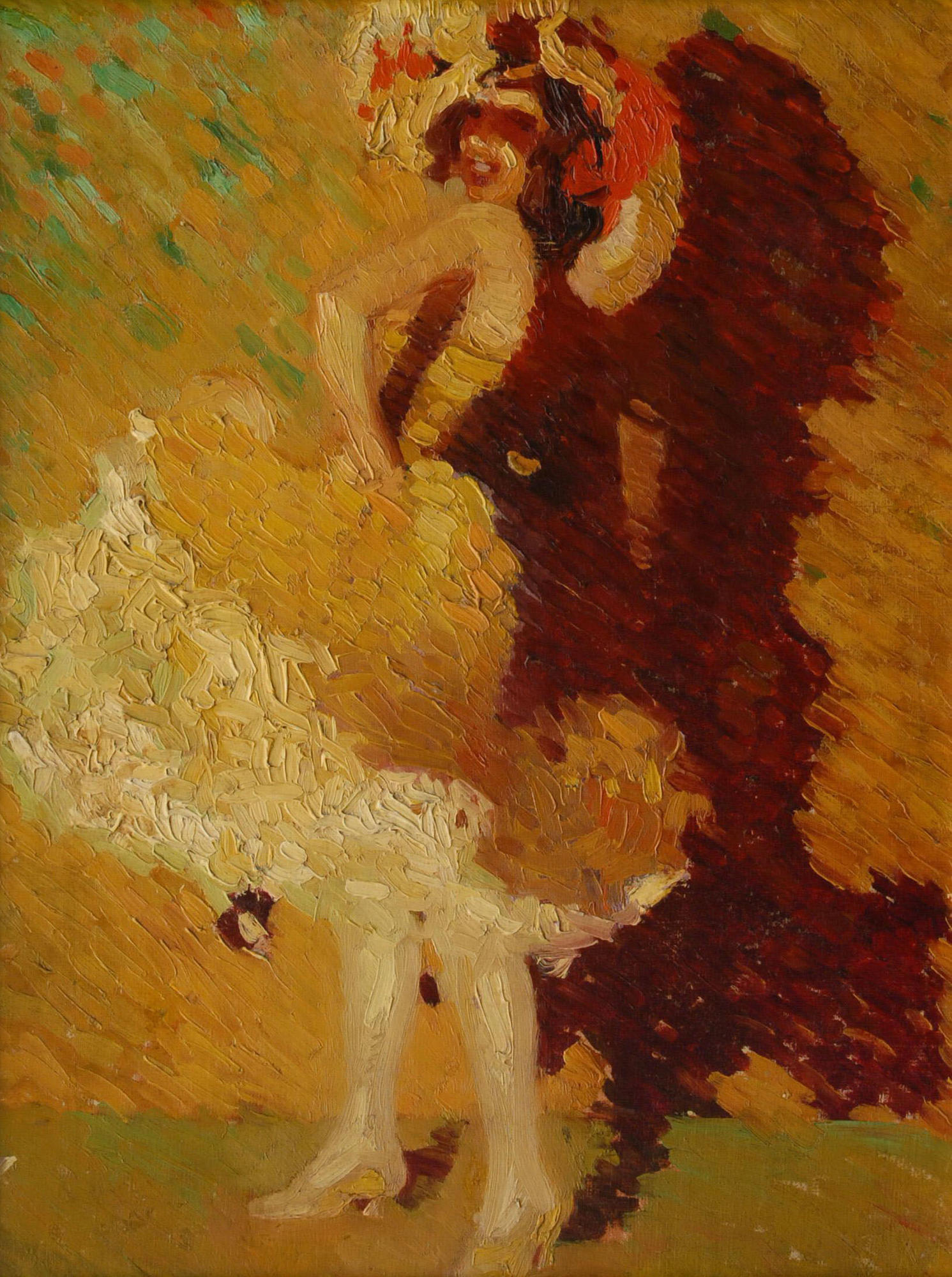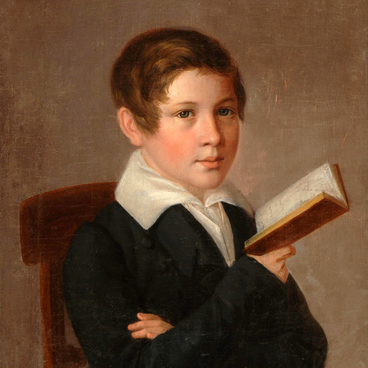Today’s specialists do not know the provenance of this picture before it found its way to the museum, nor are they aware of the attending circumstances of its arrival. The painting depicts a coquettish beauty with a snow-white smile. The canvas is executed in a flashy technique called alla prima (lit.: “at first attempt”). The artist painted it in one sitting, without waiting for all paint layers to be fully dry. This technique allows painters to play with image volumes and thus achieve striking effects, and the exhibited portrait displays that with poignancy in how puffy and airy the character’s dress looks.
On the back of the painting, the author’s signature can still be seen at the lower edge, made in black ink: “Yevgen. Sokolov 1907.” Details of the artist’s life and career were described by his daughter, Natalya Semper-Sokolovа, in the book Portraits and Landscapes: Private Memoirs of the 20th century.
According to the book, Yevgeny Sokolov was born to the family of Gavrila Sokolov, a small landowner of the gentry class, in the Novgorod Governorate. His father died prematurely, so Yevgeny was brought up in the family of Vassily Polyakov, his mother’s relative, who was the owner of a few textile factories. A workers’ theater was opened at one of them, and it was there that Sokolov first discovered his gift as an artist: He painted sets, created sketches for costumes, prepared stage props. Later, Sokolov became a member of an art and literary association called Shmarovin Wednesdays, a salon of the Moscow art patron Vladimir Shmarovin.
As time went by, Sokolov became a popular stage designer. His daughter recalled: ‘My father worked hard, competently, well, and was completely devoted to his favorite occupation; he was a set designer by vocation, he created sets for tragedies and comedies, operas and musical comedies — in total, up to 300 productions over 50 years. At first, he would study the historical period and the play, then he made accurate painted sketches or scale models, he painted the sets in his workshop himself, in large strokes and enthusiastically, with one or two assistant painters with buckets of paint. He would stay at the theater from morning till night, from night till morning, because he was strong, resilient, and everything was easy for him. […] Spectacular, bright sets were often met with applause when the curtain was opened, and during opening nights, my father was often called before the curtain.’
Yevgeny Sokolov was also known as a talented illustrator. His drawings were published in the satirical magazines The Alarm-Clock and The Bagpipe. One of his best-known works were illustrations for the fairy-tale The Little Humpbacked Horse. After 1909, the edition with Sokolov’ drawings was never republished, so it became a rarity. To mark the centenary of the popular fairy-tale, the artist created a new series of 42 illustrations in 1943. They were never released from print, and now they make part of the collection of the State Literary Museum.
On the back of the painting, the author’s signature can still be seen at the lower edge, made in black ink: “Yevgen. Sokolov 1907.” Details of the artist’s life and career were described by his daughter, Natalya Semper-Sokolovа, in the book Portraits and Landscapes: Private Memoirs of the 20th century.
According to the book, Yevgeny Sokolov was born to the family of Gavrila Sokolov, a small landowner of the gentry class, in the Novgorod Governorate. His father died prematurely, so Yevgeny was brought up in the family of Vassily Polyakov, his mother’s relative, who was the owner of a few textile factories. A workers’ theater was opened at one of them, and it was there that Sokolov first discovered his gift as an artist: He painted sets, created sketches for costumes, prepared stage props. Later, Sokolov became a member of an art and literary association called Shmarovin Wednesdays, a salon of the Moscow art patron Vladimir Shmarovin.
As time went by, Sokolov became a popular stage designer. His daughter recalled: ‘My father worked hard, competently, well, and was completely devoted to his favorite occupation; he was a set designer by vocation, he created sets for tragedies and comedies, operas and musical comedies — in total, up to 300 productions over 50 years. At first, he would study the historical period and the play, then he made accurate painted sketches or scale models, he painted the sets in his workshop himself, in large strokes and enthusiastically, with one or two assistant painters with buckets of paint. He would stay at the theater from morning till night, from night till morning, because he was strong, resilient, and everything was easy for him. […] Spectacular, bright sets were often met with applause when the curtain was opened, and during opening nights, my father was often called before the curtain.’
Yevgeny Sokolov was also known as a talented illustrator. His drawings were published in the satirical magazines The Alarm-Clock and The Bagpipe. One of his best-known works were illustrations for the fairy-tale The Little Humpbacked Horse. After 1909, the edition with Sokolov’ drawings was never republished, so it became a rarity. To mark the centenary of the popular fairy-tale, the artist created a new series of 42 illustrations in 1943. They were never released from print, and now they make part of the collection of the State Literary Museum.


